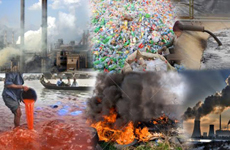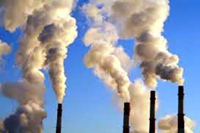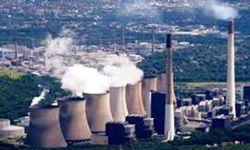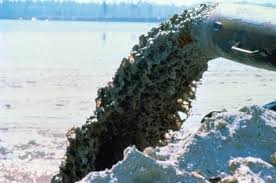Environmental Benefits
Environmental protection is a practice of protecting the natural environment on individual, organizational or governmental levels, for the benefit of the natural environment and humans. Due to the pressures of population and technology, the biophysical environment is being degraded, sometimes permanently. This has been recognized, and governments have begun placing restraints on activities that cause environmental degradation. Since the 1960?s, activity of environmental movements has created awareness of the various environmental issues. There is no agreement on the extent of the environmental impact of human activity, and protection measures are occasionally criticized.
History of environmental protection

Environmental protection in Tanzania began during the German occupation of East Africa (1884-1919)—colonial conservation laws for the protection of game and forests were enacted, whereby restrictions were placed upon traditional indigenous activities, such as hunting, firewood collecting and cattle grazing. In 1948, Serengeti was officially established as the first national park for wild cats in East Africa. Since 1983, there has been a more broad-reaching effort to manage environmental issues at a national level, through the establishment of the National Environment Management Council (NEMC) and the development of an environmental act.
Government protection
The Division of the Environment is the main government body that oversees protection.The National Environment Management Council (NEMC) is an institution that was initiated when the National Environment Management Act was first introduced in 1983. This council has the role to advice governments and the international community on a range of environmental issues. The NEMC has the following purposes: provide technical advice; coordinate technical activities; develop enforcement guidelines and procedures; assess, monitor and evaluate activities that impact the environment; promote and assist environmental information and communication; and seek advancement of scientific knowledge.
The National Environment Policy of 1997 acts as a framework for environmental decision making in Tanzania. The policy objectives are to:
- Ensure sustainable and equitable use of resources without degrading the environment or risking health or safety
- Prevent and control degradation of land, water, vegetation and air
- Conserve and enhance natural and man-made heritage, including biological diversity of unique ecosystems
- Improve condition and productivity of degraded areas
- Raise awareness and understanding of the link between environment and development
- Promote individual and community participation
- Promote international cooperation
Environmental Pollution
There are actually seven different kinds of environmental pollution.
Air Pollution
According to the dictionary, air pollution is the contamination of air by smoke and harmful gases, mainly oxides of carbon, sulfur, and nitrogen.Air pollution is linked to asthma, allergies and other respiratory illnesses. You can more about how the environment affects human health here.

Land Pollution
Land pollution is the degradation of the Earth’s surface caused by a misuse of resources and improper disposal of waste.Land pollution is responsible for damage done to natural habitat of animals, deforestation and damage done to natural resources, and the general ugly-ing up of our communities.

Light Pollution
Light pollution is the brightening of the night sky inhibiting the visibility of stars and planets by the use of improper lighting of communities.
Light pollution uses more energy (by shining more light up instead of down), may affect human health and our sleep cycles and most importantly, corrupts our kids telescopes and their curiosity

Noise Pollution
Noise pollution is any loud sounds that are either harmful or annoying to humans and animals.Noise pollution is disruptive to humans’ stress levels, may be harmful to unborn babies, and drives animals away, causing nervousness and decreasing their ability to hear prey or predators.

Thermal Pollution
- Thermal pollution is the increase of temperature caused by human activity.
- Included in thermal pollution should also be the increase in temperatures in areas with lots of concrete or vehicles, generally in cities
These kinds of environmental pollution can cause aquatic life to suffer or die due to the increased temperature, can cause discomfort to communities dealing with higher temperatures and can even affect plant-life in and around the area.

Visual Pollution
Visual pollution is what you would call anything unattractive or visualizing damaging to the nearby landscape. This tends to be a highly subjective topic, as we all find different things attractive and unattractive.Mostly visual kinds of environmental pollution are annoying, although some may say they are also depressing (such as when they can’t see a view through a billboard).

Water Pollution
Water pollution is the contamination of any body of water (lakes, groundwater, oceans, etc).These kinds of environmental pollution are linked to health issues in humans, animals and plant-life. You can read more about how the environment is affecting our health here.

The Pollution Control Approach
The environmental consequences of rapid industrialization have resulted in countless incidents of land, air and water resources sites being contaminated with toxic materials and other pollutants, threatening humans and ecosystems with serious health risks. More extensive and intensive use of materials and energy has created cumulative pressures on the quality of local, regional and global ecosystems.
Applying Pollution Control Technologies
Application of pollution control methods has demonstrated considerable effectiveness in controlling pollution problems – particularly those of a local character. Application of appropriate technologies is based on a systematic analysis of the source and nature of the emission or discharge in question, of its interaction with the ecosystem and the ambient pollution problem to be addressed, and the development of appropriate technologies to mitigate and monitor pollution impacts.
